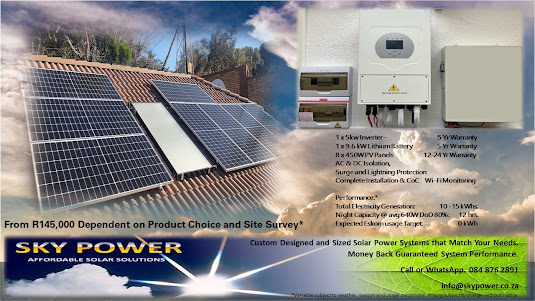(Re posted from April 2010)
One of the biggest problems the consumer in South Africa has is knowing which Solar Water Heater to select.
In spite of the fact that there are now a great many systems available on the Eskom subsidy list to choose from, it is difficult to separate the good from the ugly, since even the bad systems are accepted onto the scheme. By bad I mean systems which deliver a very low energy replacement.
The public perception is that if a product is listed on the Eskom subsidy scheme it must be OK, right? And certainly if it has SABS Mark approval it should be fit for purpose. Unfortunately, in my opinion, this is not the case.
See our article published back in March 2010.
http://www.busrep.co.za/index.php?fArticleId=5387996
The value of rebate a system was eligible for, started out being directly proportional to the energy it could replace. The revised scheme announced in January this year departed from common sense in favour of something purportedly aimed at enabling a five year ROI (return on investment) on systems of different prices, regardless of their energy displacement capability.
So now the situation exists where a 300L system delivering 9kwh of energy receives almost 30% more subsidy than a 200L systems delivering the same energy, this, in spite of the fact that the 200L system will provide better water temperatures and represent a better ROI.
So how can one evaluate the best buy in solar water heating products?
In South Africa this is very difficult since the SABS and Eskom both consider test results and system ratings confidential and do not require a supplier to disclose this information.
We find this rather odd since other countries have open policies on such information.
New Zealand have the Energy Efficiency and Conservation Authority
http://www.energywise.govt.nz/solarcalc
The United States for example has the SRCC
http://www.solar-rating.org/
Which also advocates labelling to indicate the efficiency of various solar products.
Fortunately with the benefit of having access to our own reports and certain others from reputable suppliers, we are able to reverse calculate the Q factor (performance rating) of any product in the Eskom scheme from its subsidy value.
With knowledge of the products Q factor and tank capacity it is possible to level the playing fields and gain the ability to compare apples with apples. To this end Sky Power have developed a calculator which we call the “Product Performance Evaluator”.
The calculator simplifies this calculation and produces comparative data specific to the products whose details you have entered which you can then use to make your decision.
Open the
Product Performance Evaluator here.
In a separate window browse the Eskom suppliers list and select the products you are interested in from this site.
Eskom Suppliers list
On the product Performance Evaluator enter the:
Total installed price of the product
Subsidy value in Rands
Capacity of the system in litres.
The calculator will return:
The Q factor of the product
The Rand value per kWh used to calculate the rebate
The energy required to produce a 40 degree temp rise
The percentage of required energy the product will supply from Solar Input at the SABS test datum.
Cost effectiveness of the product in Rand’s per kWh.
A rating of the products performance.
Having completed this exercise you may be interested to take the next step and get an estimate of product performance throughout the year.
You may then also plug the Q factor, geyser volume and product price information into our Expected Temperature graph tool and you will be able to see the expected temperature delivery of the product month by month according to your location, roof slope and other variable information.
The same tool also allows you to estimate a ROI based on the current and escalated price of electricity, replaced energy and your initial investment.
If you have any difficulty in using the tool please drop us a line and we’ll do our best to help you.





.jpg)
.jpg)
.jpg)




